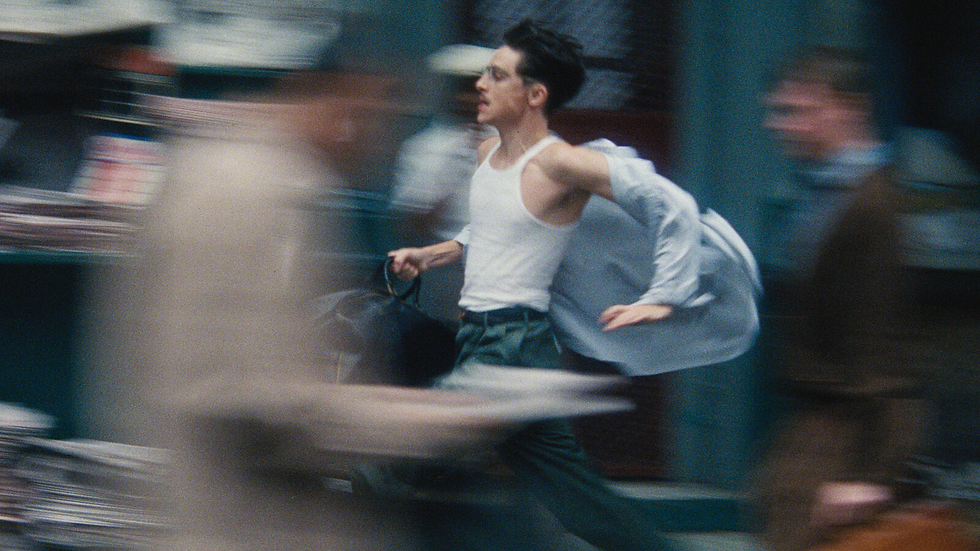"Nightmare Alley:" Long Live the New Noir
- Zachary Zanatta

- Jan 7, 2022
- 4 min read
I had the pleasure of catching Nightmare Alley this at the world premiere in Toronto as it was happening concurrently across three cities, and it cemented my belief that Guillermo Del Toro is one of the most enigmatic filmmakers working today. Consistently pushing artistic boundaries and creating memorable and unique genre films across the board. He’s a filmmaker who permanently alters every genre he experiments within, whether it be romance, horror, action, no matter what, Del Toro injects his work with unabashed creativity.

With Del Toro’s most recent work, he decided to take a whack at a genre ripped right from the Golden age of Hollywood, the film noir. Noir has unfortunately fallen to the wayside in the current popular film landscape, large in part due to notoriously hard to follow plots and morally bankrupt characters. The slow fall from relevance that the noir has experienced can also be chalked up to a different form of crime storytelling, with current films taking a more action-oriented approach rather than a complex web of lies and deceit largely told through dialogue and tense moments. Noirs in recent memory are more along the lines of a neo-noir, having the mystery and moral limbo of classic noirs with a more quickly paced and bombastic style of storytelling. Del Toro’s Nightmare Alley is a triumphant return to form for the classic noir. Dangerous women, slimy men, twists and turns, a meditative pace that leads to an explosive third act, and above all else, danger. Nightmare Alley is a movie where nobody can be trusted, and just when you think you’re safe, the rug gets pulled from underneath you again.
The adherence to noir archetypes helps make Nightmare Alley stand out in the modern crime film landscape of linear plots and two-dimensional characters. Walking out of the film, I was stunned by how simple the film was, yet the simplicity makes it more complex. It lacks the fantastical elements of Del Toro’s other works, which can certainly feel jarring if you’re accustomed to the dark fairytale approach, but Nightmare Alley’s grounded atmosphere emphasizes the characters and violence. The twists and mind games that Del Toro plays all have rational explanations, and every explanation is revealed in a natural way. In that way, the viewer is immersed in the world, never having improper narrative communication and making the story progression more authentic. There are many characters and the occasional time jump, but the methodical pacing keeps everything linear and basic, keeping the narrative complex, but not convoluted.
The film also showcases a plethora of unique filmmaking techniques reminiscent of old Hollywood and expressionistic film. The film uses expressionistic lighting that casts characters almost completely in shadow while only highlighting a very minute and specific detail. In one scene, moonlight from the window casts a sliver of light on the eyes of Cate Blanchett while the rest of her is still submerged in darkness. That’s one of many shots that feels ripped straight from something like Double Indemnity or Out of the Past, a beautifully done callback to the noirs of old. There are also many unique shots and transitions taken from works of the 40’s and 50’s. I noticed multiple uses of an iris transition, something I don’t think I’ve seen since Sunrise: A Song of Two Humans. But these techniques don’t feel out of place, rather it adds to the classic feel the film attempts to emulate.

Del Toro’s love letter to the genre isn’t without its own personality though. Del Toro’s ability to create an ethereal, dream-like atmosphere isn’t lost at all. The cinematography is sinister and beautiful, another staple from the seasoned director. Combined with the phenomenal score, Nightmare Alley crafts a beautifully dark atmosphere. The acting is also fantastic across the board. Bradley Cooper in particular makes a compelling antagonist who is beyond loathsome but hypnotizing to watch.
That being said, Nightmare Alley isn’t a perfect film. Sometimes, the strict adherence to the noir formula becomes a little tedious, namely the slow pace that encumbers many noirs around the halfway point. The first act of the film is a solid 8/10, a perfect setup of plotlines, characters and overall experience. The third act is an easy 10/10, violent, horrific, the perfect culmination of all the lies and deceit built up over the last two hours. But the second act… While certainly not terrible and still well made, the second act, which tracks the protagonist’s rise to fame and fortune, is inexcusably dry. Any intrigue and mystery built up in the first half hour is basically forgotten and the new slew of characters are about as half as interesting as the colorful carnival folk from the beginning. While necessary for the emotional catharsis of the third act, the sluggish pace and repetitive story beats of the second act bring the macabre experience to an unexpected, grinding halt.
Although it has its flaws, Nightmare Alley is a fantastic exploration of the depravity and the greed of man. It’s a film that feels evil from the first frame to the very last, made even more terrifying from Del Toro’s examination of men being the real monsters. Bloody, scary, steamy, and tense, Nightmare Alley is movie that makes you feel like you’re in danger. A loving homage to a genre that deserves a resurgence, Nightmare Alley is a worthy addition to a year filled with fantastic films, and it deserves to be remembered as one of Del Toro’s better efforts.



